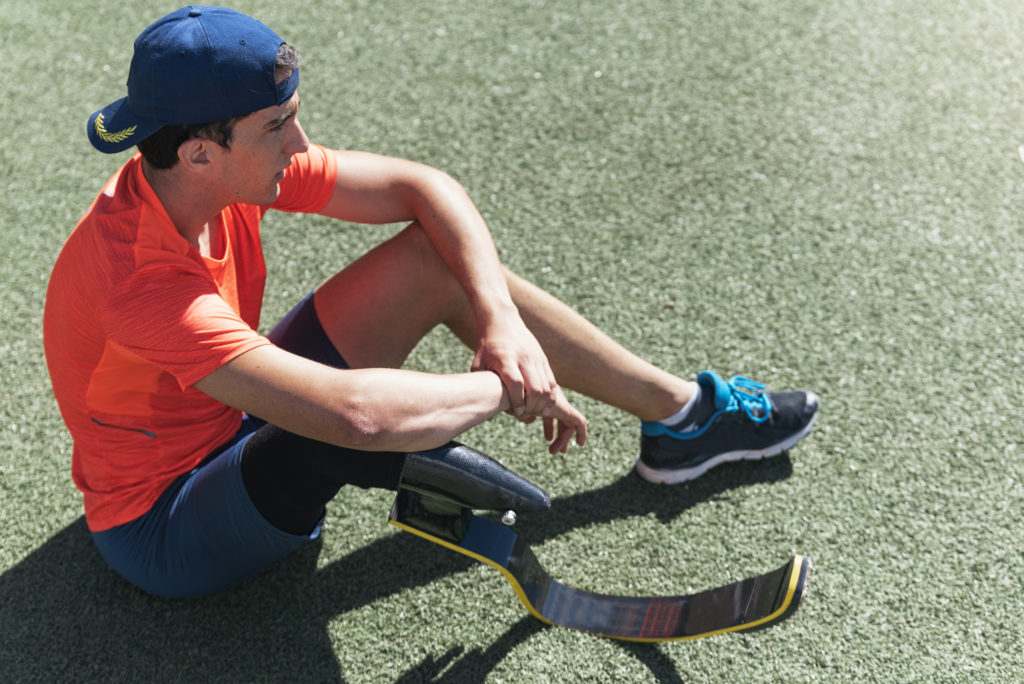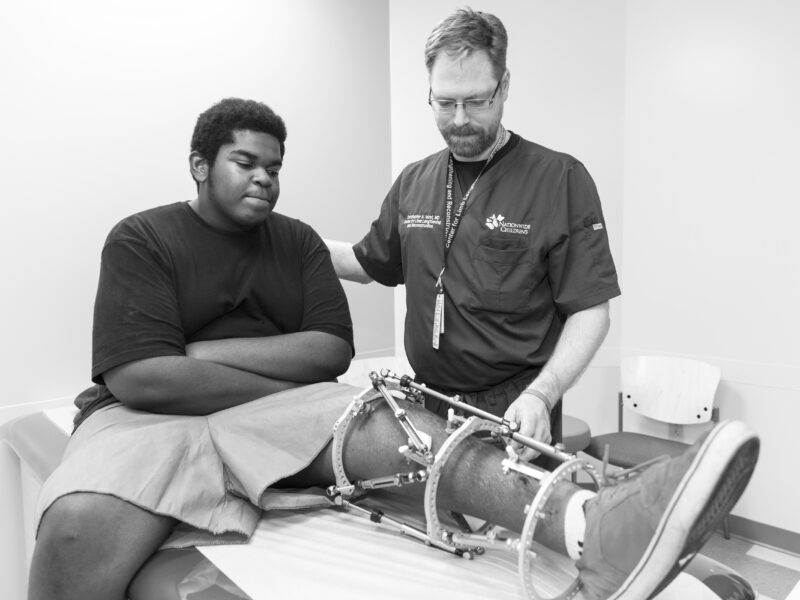Targeted Muscle Reinnervation for Amputees Offers Chance at Less Pain, More Prosthetic Options
Targeted Muscle Reinnervation for Amputees Offers Chance at Less Pain, More Prosthetic Options https://pediatricsnationwide.org/wp-content/uploads/2021/09/AdobeStock_163756753-1024x684.jpg 1024 684 Katie Brind'Amour, PhD, MS, CHES Katie Brind'Amour, PhD, MS, CHES https://pediatricsnationwide.org/wp-content/uploads/2021/03/Katie-B-portrait.gif- September 29, 2021
- Katie Brind'Amour, PhD, MS, CHES

The innovative procedure pioneered by surgeons at The Ohio State University and Nationwide Children’s Hospital reduces postoperative pain and enables control of bioprosthetics.
What started as Department of Defense-funded research in adult amputees at The Ohio State University Medical Center about 6 years ago has morphed into standard of care treatment for children undergoing amputations of any kind, for any reason at Nationwide Children’s Hospital. Targeted muscle reinnervation (TMR), which takes the peripheral nerves cut during amputation and implants them into other muscles to establish an end target for the nerve to connect to the brain, offers both immediate postoperative pain reduction and the longer-term option to make use of bioprosthetics through connection to these relocated nerves.
“What’s great is that the immediate benefits of TMR — postoperative pain control and a decrease in phantom limb pain—go hand in hand with a decreased need for ongoing narcotic medications after the procedure, which is a big plus considering the opioid epidemic,” says Thomas Scharschmidt, MD, director of the Pediatric Orthopedic Oncology Program at Nationwide Children’s and associate professor in Orthopaedics at OSUMC and the James Cancer Hospital. “Down the road, one of the biggest benefits is that it opens the door for a bioprosthetic and emerging technologies. Because those nerves have been rerouted, they can be hooked into a sensor in the prosthetic so that the patient can learn to control a prosthetic hand, wrist and fingers.”
Upper limb bioprosthetics are the most advanced of these interactive technologies, but lower-limb devices should enable foot and ankle control in the near future, offering greater mobility and physical function for even more patients long-term.
The combination of improved clinical outcomes and flexible future opportunities for prosthetic limbs encouraged Dr. Scharschmidt and his fellow surgeons to begin offering TMR to children with amputation operations almost immediately after its initial successes in adults, regardless of whether the amputation is due to cancer, trauma or even congenital conditions. The procedure is covered by insurance and is best done during the amputation rather than as a secondary operation.
“There is no literature in pediatrics yet regarding secondary TMR after the amputation, but we know that in adults there is still benefit in doing it secondarily,” says Dr. Scharschmidt, who was part of the team that published their initial TMR results and institutional protocol in adults in the Journal of Surgical Oncology. “We do see referrals who have problems with neuroma pain or phantom limb pain who are candidates for secondary TMR, but the outcomes are not as predictable as when it is done at the time of amputation.”
Dr. Scharschmidt and his colleagues in plastic surgery recently submitted a case series discussing TMR in children for publication. The group is the only one in the country offering pediatric TMR as routine care during amputations, and accepts referrals for children and adults. Nationwide Children’s also offers a comprehensive Limb Deficiency Clinic for postoperative care and long-term limb optimization services.
Reference:
Alexander JH, Jordan SW, West JM, et al. Targeted muscle reinnervation in oncologic amputees: Early experience of a novel institutional protocol. Journal of Surgical Oncology. 2019;120(3):348-358.
Image credit: Adobe Stock
About the author
Katherine (Katie) Brind’Amour is a freelance medical and health science writer based in Pennsylvania. She has written about nearly every therapeutic area for patients, doctors and the general public. Dr. Brind’Amour specializes in health literacy and patient education. She completed her BS and MS degrees in Biology at Arizona State University and her PhD in Health Services Management and Policy at The Ohio State University. She is a Certified Health Education Specialist and is interested in health promotion via health programs and the communication of medical information.
-
Katie Brind'Amour, PhD, MS, CHEShttps://pediatricsnationwide.org/author/katie-brindamour-phd-ms-ches/April 27, 2014
-
Katie Brind'Amour, PhD, MS, CHEShttps://pediatricsnationwide.org/author/katie-brindamour-phd-ms-ches/April 27, 2014
-
Katie Brind'Amour, PhD, MS, CHEShttps://pediatricsnationwide.org/author/katie-brindamour-phd-ms-ches/April 27, 2014
-
Katie Brind'Amour, PhD, MS, CHEShttps://pediatricsnationwide.org/author/katie-brindamour-phd-ms-ches/April 28, 2014
- Post Tags:
- Amputation
- Orthopedics
- Osteoscarcoma
- Posted In:
- Clinical Updates
- In Brief







